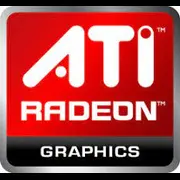ATI FirePro V5800

ATI FirePro V5800: Architecture, Performance, and Relevance in 2025
Examining whether an old professional graphics card is suitable for modern tasks.
Introduction
The ATI FirePro V5800 is a professional graphics card released by AMD (then ATI) in 2010. Despite its venerable age, it can still be found on the secondary market and in some workstations. In this article, we will analyze how relevant it is in 2025, how it performs in gaming and professional tasks, and who should consider purchasing it.
1. Architecture and Key Features
Architecture: The FirePro V5800 is built on the Cypress GPU (using the TeraScale 2 architecture). It is the first generation of AMD supporting DirectX 11 and OpenGL 4.1.
- Process Technology: 40 nm (outdated by 2025 standards).
- Compute Units: 800 Stream processors, 40 texture units, and 16 raster units.
- Unique Features: In 2010, the card was positioned as a solution for professionals, but modern technologies like Ray Tracing (RTX), DLSS, or FidelityFX are absent. Support for OpenCL 1.1 and DirectCompute enables basic parallel computations.
Conclusion: The architecture is tailored to tasks from the 2010s and is not designed for modern APIs or algorithms.
2. Memory: Type, Size, and Bandwidth
- Memory Type: GDDR5 (leading standard at the time of release).
- Size: 1 GB.
- Bus Width: 128-bit.
- Bandwidth: 64 GB/s.
Impact on Performance:
1 GB of memory is critically insufficient for modern games and professional applications. For example, rendering 3D scenes in Blender or working with 4K video in DaVinci Resolve would be accompanied by frequent data loading and lag. Even for office tasks in 2025, such a volume seems limited.
3. Gaming Performance
The FirePro V5800 was designed for workstations, but enthusiasts sometimes use it for gaming. However, in 2025, its capabilities look modest:
- 1080p (Low/Medium):
- CS:GO: ~30-40 FPS (minimum settings).
- Dota 2: ~25-35 FPS (medium settings).
- Fortnite: less than 20 FPS (even on low).
- 1440p and 4K: Not recommended due to lack of memory and weak computational power.
Ray Tracing: No hardware support. Software emulation is impossible due to low performance.
4. Professional Tasks
The card is certified for professional applications, but its potential in 2025 is limited:
- 3D Modeling (AutoCAD, SolidWorks):
Suitable for simple projects, but complex scenes will cause delays.
- Video Editing (Premiere Pro, DaVinci Resolve):
Editing at resolutions up to 1080p is possible, but rendering will take 3-5 times longer than on modern GPUs.
- Scientific Calculations (OpenCL):
Can be used for educational tasks, but insufficient memory and speed for serious simulations (e.g., in MATLAB).
Comparison with Modern Solutions:
Current Radeon Pro and NVIDIA Quadro offer 10-20 times more CUDA/Stream cores and up to 48 GB of memory.
5. Power Consumption and Heat Dissipation
- TDP: 108 W.
- Cooling Recommendations:
The card is equipped with an active cooler, but overheating may occur in compact cases. It is optimal to use a case with 2-3 fans for airflow.
- Power Supply: Minimum 400 W (with a margin for other components).
Eco-Friendliness: High power consumption compared to modern GPUs (for instance, the Radeon Pro W6600 — 100 W with double the performance).
6. Comparison with Competitors
2010 Analogs:
- NVIDIA Quadro 4000: Better optimized for SPECviewperf, but similar gaming performance.
Modern Analogs (2025):
- AMD Radeon Pro W6600: 8 GB GDDR6, PCIe 4.0 support, priced from $500.
- NVIDIA RTX A2000: 12 GB GDDR6, ray tracing, priced from $600.
Conclusion: The FirePro V5800 lags behind even budget contemporary professional cards.
7. Practical Tips
- Power Supply: 400-500 W with 80+ Bronze certification.
- Compatibility:
- PCIe 2.0 x16 slot (compatible with PCIe 3.0/4.0, but bandwidth is limited).
- OS Support: Official drivers are available only for Windows 7/8 and older versions of Linux. Conflicts may occur on Windows 10/11.
- Drivers: Use the latest versions from AMD's website (released before 2018).
8. Pros and Cons
Pros:
- Reliability (designed for 24/7 operation).
- Low price on the secondary market ($30-50).
- Support for professional applications.
Cons:
- Outdated architecture.
- Insufficient memory for modern tasks.
- Lack of support for new APIs and technologies.
9. Final Conclusion: Who Should Consider FirePro V5800?
This graphics card is suitable for very niche scenarios:
- Retro PC Enthusiasts: Building systems with old OS and software.
- Budget Workstations: For simple tasks like 2D drafting or text work.
- Backup Solution: As a temporary replacement for a broken card.
Why Not to Buy It in 2025?
Even budget modern GPUs (for example, the AMD Radeon RX 6400 for $130) offer 5-7 times the performance, support for current technologies, and a warranty.
Conclusion
The ATI FirePro V5800 is an example of an "IT veteran," reflecting the progress made in the last 15 years. Its time has passed, but it may still serve niche purposes. However, for the majority of users in 2025, investing in modern hardware would be the wiser choice.
Basic
Memory Specifications
Theoretical Performance
Miscellaneous
Benchmarks
Compared to Other GPU
Share in social media
Or Link To Us
<a href="https://cputronic.com/en/gpu/ati-firepro-v5800" target="_blank">ATI FirePro V5800</a>